Revolutionary findings: Naturopathy in the focus of research!
Discover the latest research in naturopathy: from herbal medicine to acupuncture, nutritional therapy and more.
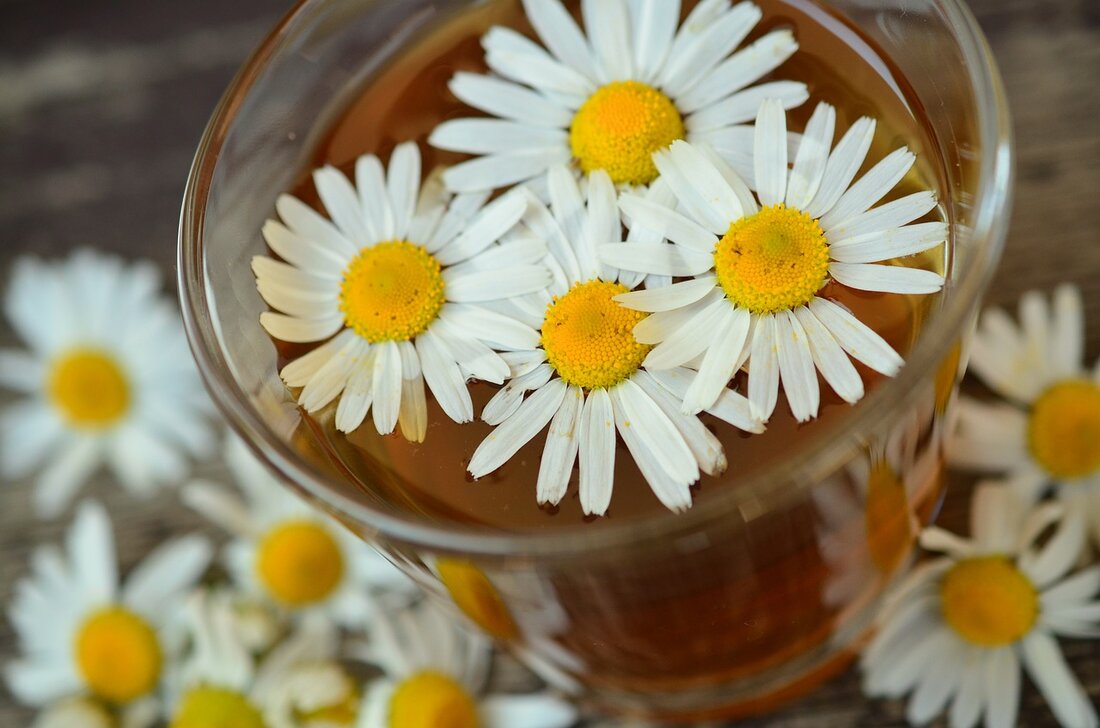
Revolutionary findings: Naturopathy in the focus of research!
Naturopathy has been experiencing an impressive renaissance in recent years as more and more people look for gentle, holistic approaches to promoting health and well-being. At the same time, scientific research in this area has made enormous progress by combining traditional healing methods with modern research methods. New studies provide exciting insights into how plant-based active ingredients, nutrition and alternative therapies affect the human body, thereby providing a sound basis for their application. This article delves into the latest developments and highlights how innovative approaches from naturopathy can not only be viewed as a supplement, but often also as an equivalent alternative to conventional medicine. Be inspired by the latest scientific findings and discover how ancient knowledge and modern research work hand in hand to support health naturally.
Current trends in naturopathy
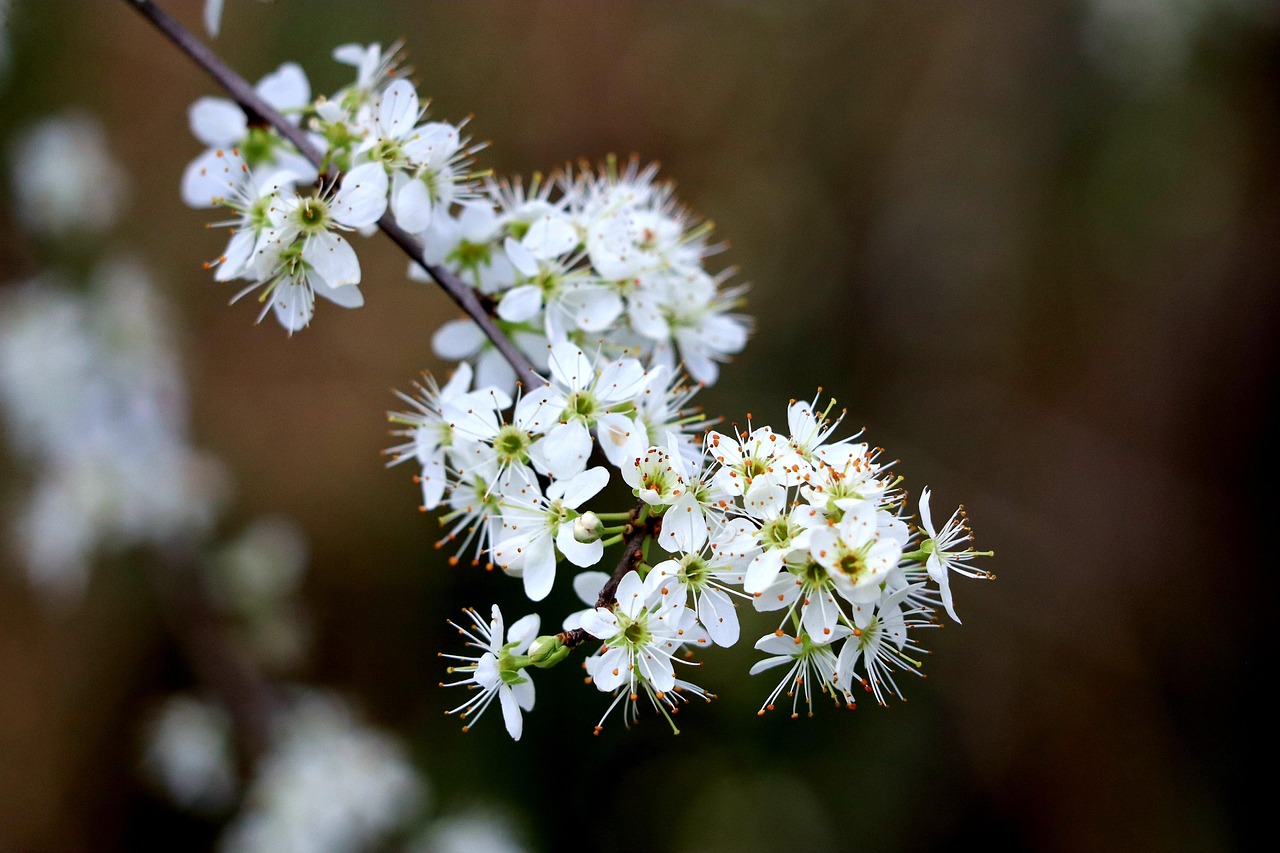
Imagine walking through a lush garden, surrounded by medicinal herbs whose scent fills the air, while in the distance, modern laboratories gain new insights into these ancient treasures. It is precisely at this intersection of tradition and innovation that naturopathy finds itself today. Interest in alternative healing methods is growing worldwide, not only among patients, but also among doctors and researchers, who are increasingly proving the effectiveness of certain approaches. A look at the current trends shows how profoundly the understanding of health is changing: it is no longer just about treating symptoms, but rather about a holistic view of body, mind and environment.
A central aspect of this development is the growing acceptance of herbal medicines, the use of which is supported by scientific studies. For example, phytotherapy shows promising results in the treatment of depression or liver diseases. Likewise, acupuncture is gaining recognition, particularly in relieving chronic pain and headaches. While some procedures such as homeopathy continue to be controversial, others, such as osteopathy or chiropractic, provide convincing results for back pain. These evidence-based approaches highlight the importance of distinguishing between scientifically based methods and those with unclear effects, as emphasized in current analyzes (see nature.wiki ).
At the same time, there is a clear change in the way people manage their health. Plant-based diets rich in fruits, vegetables and whole grains are increasingly associated with a lower risk of chronic disease. At the same time, the demand for organic and regional food is increasing in order to avoid pesticides and chemicals. In addition, natural dietary supplements such as adaptogens - including Ashwagandha or Rhodiola - and medicinal mushrooms such as Reishi or Lion's Mane are becoming increasingly popular, especially for managing stress and strengthening the immune system.
But it's not just nutrition and herbal remedies that are the focus. Practices such as meditation, yoga and tai chi are experiencing a resurgence as they help reduce mental stress and increase well-being. Thanks to digital offerings, such as mindfulness apps or online communities, such techniques can be easily integrated into everyday life. Technology is also playing an increasingly important role: wearable devices make it possible to track health data in real time and customize wellness programs. At the same time, telehealth platforms facilitate access to naturopaths through virtual consultations, significantly expanding the reach of these approaches.
Naturopathy receives a further boost through its integration into conventional treatment concepts. Integrative medicine, which combines natural therapies such as herbal medicine or nutritional counseling with traditional medical practices, is increasingly seen as a way to provide personalized care with minimal side effects. This development goes hand in hand with a professionalization of training: In Germany, for example, specialized universities and institutes offer in-depth further training, while stricter quality standards and legal frameworks - for example through EU guidelines on herbal medicines - strengthen the seriousness of the field.
Another notable trend is the connection between personal and planetary health. Sustainability is becoming a guiding principle, be it through a focus on environmentally friendly products or supporting sustainable agriculture. Initiatives like local wellness centers or community gardens promote not only individual health but also social connectedness. This holistic perspective, which emphasizes the connection between people and the environment, is also reflected in current reports (see Natural Health Kingdom ).
Challenges still remain. The evidence for some procedures is inconsistent and further rigorous research is needed to establish clear standards. Equally important is interdisciplinary collaboration between conventional and alternative medicine in order to optimize patient care and expand treatment options. The road to comprehensive integration into the healthcare system is still long, but the dynamic with which naturopathy is developing gives hope for exciting progress.
Scientific foundations of naturopathy

Have you ever wondered why a simple herbal tea soothes or an acupuncture needle relieves pain? Behind the gentle methods of naturopathy lie complex biological and chemical processes that modern research is increasingly decoding. When we talk about mechanisms, we mean systems of interacting parts and processes that produce specific effects in the body - a concept that is deeply rooted in biology and helps us understand the effects of naturopathic therapies. This scientific perspective opens up fascinating insights into how traditional approaches work at the cellular and molecular levels.
Let's take phytotherapy as an example: active plant ingredients such as curcumin from turmeric or hypericin from St. John's wort interact with biochemical signaling pathways in the body. Curcumin, for example, inhibits inflammatory enzymes such as cyclooxygenase-2 (COX-2) and thereby influences inflammatory processes at the molecular level. Flavonoids in chamomile have a similar effect, binding to receptors in the brain and producing anxiety-relieving effects by modulating the nervous system. Such interactions between plant molecules and human cells show how precisely nature can be tailored to our organism, even if many details of these processes still need to be researched.
Another exciting field is acupuncture, whose effects remained a mystery for a long time. We now know that placing needles at specific points stimulates the release of endorphins and other neurotransmitters. These biochemical changes influence pain signals in the central nervous system and can dampen inflammatory reactions. Additionally, studies suggest that acupuncture increases activity in the parasympathetic nervous system, leading to deeper relaxation. Such mechanisms explain why this method often provides relief from chronic pain or migraines and highlight the connection between physical interventions and biochemical reactions.
Nutritional approaches in naturopathy can also be understood at the molecular level. Antioxidants from berries or green tea, such as polyphenols, neutralize free radicals that can cause cell damage. This protective mechanism reduces oxidative stress, which is associated with chronic diseases such as cardiovascular problems or diabetes. At the same time, omega-3 fatty acids from flaxseeds or walnuts promote the formation of anti-inflammatory lipid mediators that regulate inflammatory processes in the body. These chemical interactions show how targeted nutrition can be used as a therapeutic tool.
With adaptogenic plants such as ashwagandha or rhodiola, which are used in naturopathy to manage stress, the focus is on their ability to modulate the hypothalamic-pituitary-adrenal (HPA) axis. This axis controls the body's stress response by regulating the release of cortisol. Adaptogens appear to stabilize these hormonal processes by acting on receptors in the cells, thereby increasing resilience to stressors. Although the exact biochemical pathways are not yet fully understood, such findings provide a basis to scientifically substantiate the traditional use of these plants.
However, a deeper understanding of these processes requires that we not only describe but also explain mechanisms. As biologists emphasize, it is about identifying the causes and components that produce a phenomenon - be it through etiological explanations that show the trigger of an effect, or through constitutive approaches that explain the parts and processes involved (see Wikipedia: Mechanisms in Biology ). In naturopathy, this means that, for example, we not only determine that a plant has an anti-inflammatory effect, but also identify the molecules, cells and signaling pathways involved that cause this effect.
The challenge is that many of these processes are dynamic and complex. Numerous factors often interact - from genetic requirements to environmental conditions - and influence the outcome of a therapy. While science advances, for example in molecular biology or neurobiology, much remains unclear because not all details of the underlying mechanisms are fully understood. However, these gaps also offer scope for further research to understand and optimize the effectiveness of naturopathic approaches even more precisely.
A look at the chemical and biological principles shows how closely naturopathy and modern science are linked. Each new discovery about how a plant or therapy works brings us closer to a comprehensive picture of how the body responds to natural interventions. These findings are important not only for researchers, but also for practical application, as they help to use therapies in a more targeted and effective manner.
Focus on herbal medicine
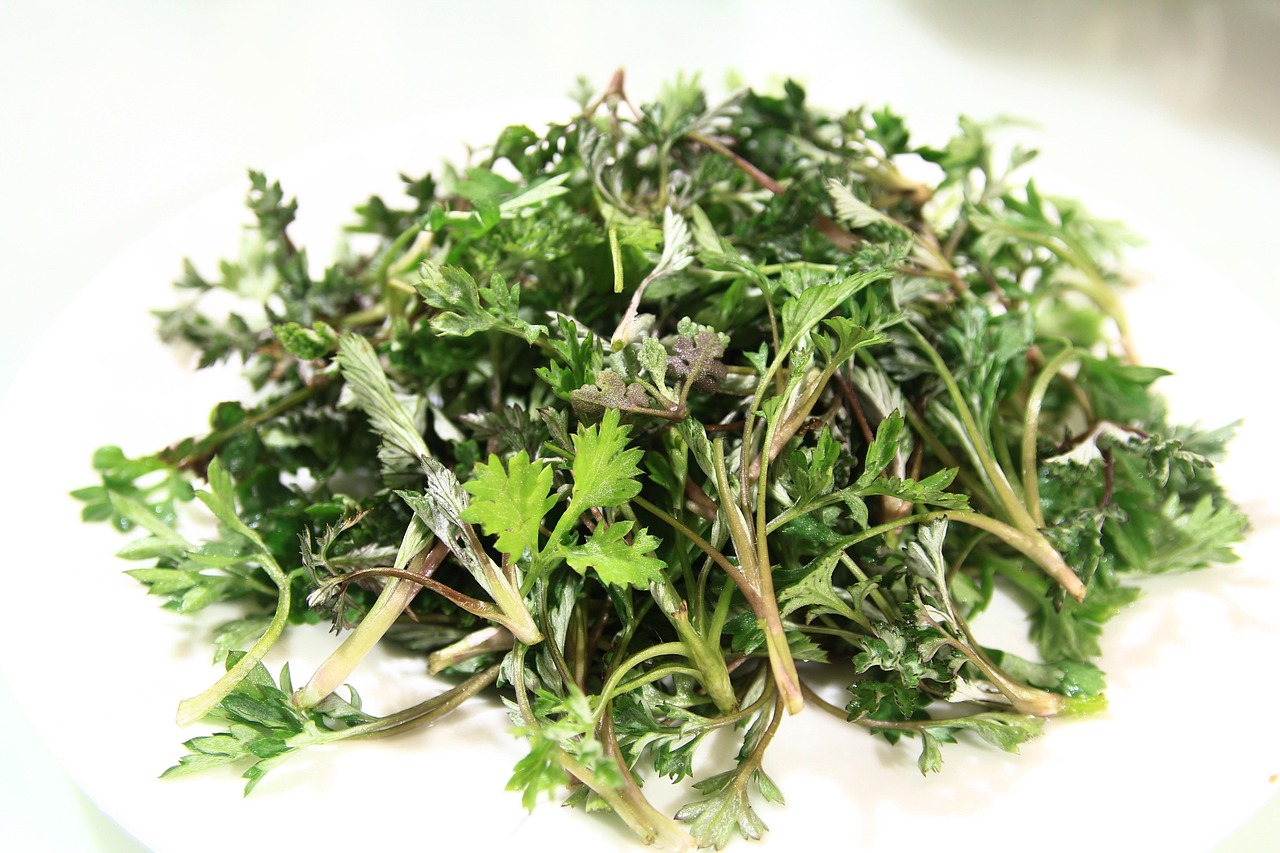
A touch of history wafts through modern laboratories as researchers unlock the secrets of ancient medicinal plants. What was once only preserved in folk medicine and traditions is now the focus of precise scientific investigations. Current studies on specific medicinal herbs provide impressive data that not only confirm their use in natural medicine, but often also reveal new possible uses. Using quantitative and qualitative methods, as are common in empirical research, the effects of these plants are objectively recorded and analyzed in relation to specific health issues (see BachelorPrint: Research results ).
Let's start with turmeric, whose bright yellow active ingredient curcumin has been intensively studied in recent years. A number of studies based on quantitative data showed that curcumin has anti-inflammatory properties that can provide significant relief in conditions such as arthritis. In clinical trials with placebo-controlled groups, taking curcumin supplements for several weeks was found to reduce pain and swelling in patients with rheumatoid arthritis. These results, often presented in the form of descriptive statistics, highlight the potential benefit for inflammatory diseases, although the exact dosage and bioavailability require further research.
Current studies on St. John's wort, which is traditionally used for mild to moderate depression, have a different focus. Several randomized, double-blind studies in recent years have shown that the active ingredient hypericin inhibits the reuptake of serotonin in the synapses, which can lead to an improvement in mood. In a comprehensive analysis with over 1,500 participants, it was documented that St. John's wort achieved similar effects to conventional antidepressants in many patients, but with fewer side effects. Such quantitative data, often summarized in tables and graphics, underline the relevance of this plant in the treatment of psychological complaints.
Ginger is also in the spotlight of recent research, particularly because of its effects on indigestion and nausea. Clinical research involving systematic observations and surveys has shown that ginger root extracts can accelerate gastric emptying, thereby alleviating symptoms such as morning sickness in pregnant women and motion sickness. A study of over 200 participants found that taking ginger capsules before traveling reduced the frequency of nausea by almost 40 percent. These results, which are based on objective measurement data, provide a sound basis for the use of ginger in daily practice.
Another plant that receives a lot of scientific attention is Echinacea, often used to strengthen the immune system. Recent studies have focused on their effects in preventing and treating colds. In a placebo-controlled study involving several hundred subjects, it was found that echinacea preparations could shorten the duration of colds by an average of one day and reduce the severity of symptoms. However, the data evaluated through descriptive statistics also show contradictory results, as effectiveness depends largely on the preparation method and dosage. Such nuances in the research findings highlight the need for further standardized analyses.
Last but not least, Ginkgo biloba is coming into focus, particularly because of its potential benefits for cognitive health. Studies in recent years that use both quantitative and qualitative methods have examined the effects of ginkgo extracts on memory performance and concentration, particularly in older people. An extensive study with over 2,000 participants showed that regular use over several months resulted in slight improvements in cognitive tests, particularly in patients with early dementia. These results, often presented in detailed graphics, suggest that ginkgo may play a supportive role in preventing cognitive decline, although the effects were not equally strong in all subjects.
The wealth of data on these medicinal herbs shows the importance of presenting research results objectively, without hasty interpretations. As emphasized in scientific guidelines, the focus is on describing the data collected in relation to specific questions, while further analyzes and explanations are reserved for other sections. This approach makes it possible to clearly understand the actual effectiveness and areas of application of the plants while at the same time leaving room for future studies that could clarify outstanding questions.
The range of current research on medicinal herbs opens up numerous perspectives for their use in natural medicine. From anti-inflammatory to mood-enhancing to immune-boosting effects - the results illustrate how diverse nature can serve as a source of health. These findings form a bridge between traditional knowledge and modern science that can be further expanded.
Acupuncture and its effectiveness

A tiny prick, barely noticeable, and yet it can send waves of relief through the body - the art of acupuncture has fascinated us for centuries. This practice, which originates from traditional Chinese medicine and involves placing fine needles at strategic points on the body, is now the focus of modern research. Scientists around the world are studying how this method relieves pain and promotes well-being, providing increasingly detailed insights into its therapeutic effects. The results reveal a complex interplay of biological reactions that bridges ancient knowledge and contemporary science.
A focus of current studies is on the effect of acupuncture on chronic pain, particularly in the lower back, neck and osteoarthritis. Numerous randomized, controlled studies have documented that patients experienced a significant reduction in their symptoms after several sessions. A comprehensive meta-analysis showed that acupuncture achieved significant improvements in back pain compared to placebo treatments, with the effects often lasting for months. These data suggest that the method may be a valuable option for people looking for alternatives to traditional painkillers.
The results are equally impressive in the treatment of headaches, especially migraines and tension headaches. Clinical trials in recent years have shown that regular acupuncture treatments can reduce the frequency and intensity of migraine attacks. In a study with over 500 participants, patients treated over a six-week period reported a reduction in seizure days by up to 50 percent. Such quantitative findings, often supported by descriptive statistics, highlight the potential of this technique as an adjuvant therapy for neurological complaints.
In addition to pain, research also extends to other areas of application such as nausea and vomiting, for example after chemotherapy or operations. Several studies have shown that acupuncture - especially when used on specific points such as the wrist (P6 point) - can effectively relieve these symptoms. A study of cancer patients found that the treatment significantly reduced the intensity of nausea compared to a control group. These results, which are based on objective measurement data, provide a basis for the use of the method in palliative and postoperative care, as highlighted by renowned institutions (see Mayo Clinic: Acupuncture ).
Another area that is receiving increasing attention is the effect on mental well-being and stress-related illnesses. Recent research suggests that acupuncture can increase activity in the parasympathetic nervous system, promoting relaxation. In a study with patients suffering from anxiety, it was found that after a series of treatments, not only did subjective stress levels decrease, but measurable parameters such as blood cortisol levels were also reduced. These biological changes illustrate how profound the method could have an impact on hormonal balance.
Despite these promising results, the scientific evaluation of acupuncture is not without controversy. Some systematic reviews and meta-analyses evaluating thousands of studies conclude that the evidence for certain uses is limited. Critics complain that many positive effects may be due to placebo effects, as so-called sham acupuncture - in which needles are placed in non-specific points - often shows similar results. In addition, methodological challenges, such as the difficulty of conducting truly blind studies, make it difficult to clearly assess effectiveness.
In addition, the safety and quality of the treatment depend heavily on the training of the practitioner. While the method is considered safe when used correctly, with only minor side effects such as mild pain or bruising, there are reports of rare but serious complications such as infection or injury when sterile techniques are not followed. These aspects highlight the need for strict regulations and standardized training programs to minimize risks and protect patients.
Acupuncture research is at an exciting turning point where traditional approaches meet modern scientific methods. While some questions about long-term effectiveness and the exact mechanisms of action remain unanswered, the data to date provide a solid basis for further investigation. These could not only expand therapeutic options, but also help to integrate acupuncture more closely into integrative treatment concepts.
Homeopathy under the microscope

Hardly any other method in natural medicine is as polarizing as homeopathy - an approach that is based on highly diluted substances and has captivated both supporters and critics for over two centuries. While some report profound healing successes, others see this as merely a placebo effect. Current scientific studies and debates are shedding new light on this controversial practice by attempting to decipher the mechanisms behind the potentized preparations and objectively assess their effects. This discussion moves between empirical observations and fundamental questions about the nature of healing.
A central point in recent research is the question of whether homeopathic remedies have specific effects or merely function as placebos. The latest studies, including preclinical experiments and clinical analyses, provide evidence that potentiated substances have measurable effects in certain contexts, despite levels of dilution at which the starting substances are often no longer detectable. Repeated, blinded experiments with models such as duckweed or cress have documented specific responses to potentiated gibberellin or arsenic that vary depending on the physiological state of the organisms. Such results suggest that there may be mechanisms beyond the pure placebo effect.
Clinical research reinforces this impression with recent meta-analyses of randomized controlled trials (RCTs) that demonstrate specific effects of homeopathic preparations for certain complaints. For example, positive effects compared to placebo treatments were found in allergic diseases and acute diarrhea. These analyses, which are based on a broad database, contradict the widespread assumption that homeopathy is based exclusively on subjective expectations. However, the evidence remains inconsistent because not all studies provide equally convincing results and there are methodological weaknesses in some studies.
Another aspect that emerges in current research concerns physicochemical properties of potentiated solutions. Scientists like Prof. Dr. Stephan Baumgartner, who has been conducting basic research for 25 years, report specific effects that can be seen in several experimental models. At the 5th International Research Conference of the Homeopathy Research Institute in London 2023, he presented results indicating that potentiated preparations have measurable differences from pure solvents. Such observations, which have also been replicated in independent laboratories, require a deeper examination of possible explanations (see Homeopathy Helps: Baumgartner ).
Despite these promising approaches, homeopathy remains controversial in the scientific community. Critics argue that the high degrees of dilution should have no physical or chemical effect because there are no longer any molecules of the original substance present. They point to studies in which homeopathic treatments show no significant differences compared to placebos and criticize that positive results could often be due to methodological distortions or publication bias. This skepticism is reinforced by the difficulty of explaining homeopathy's mechanisms of action using established scientific models.
On the other hand, advocates emphasize that the empirical data cannot be ignored. They refer to preclinical experiments that demonstrate specific reactions in biological systems, as well as clinical observations that document positive effects when used in a qualified manner. It is also argued that homeopathy may be based on principles that go beyond classical molecular biology - such as the information-transferring properties of water or other carrier substances. However, such hypotheses are speculative and require further rigorous research to be scientifically substantiated.
The debate over homeopathy also reflects a fundamental tension between conventional medicine and alternative approaches. While some researchers and clinicians are calling for the method to be more closely integrated into integrative treatment approaches, others see it as a threat to evidence-based practice because unclear mechanisms of action and inconsistent results could compromise patient safety. This discussion is complicated by the fact that many patients subjectively benefit from homeopathic treatments, which raises the question of how such experiences can be incorporated into scientific evaluations.
The latest findings on homeopathy leave room for speculation and further questions. Future research incorporating physical measurements and experimental models could help to better understand the molecular and structural properties of potentiated preparations. It is equally important to continue clinical studies to identify specific areas of application and optimal operating conditions. These developments could take the discussion about homeopathy to a new level and further clarify its place in modern medicine.
Nutritional therapy and its role
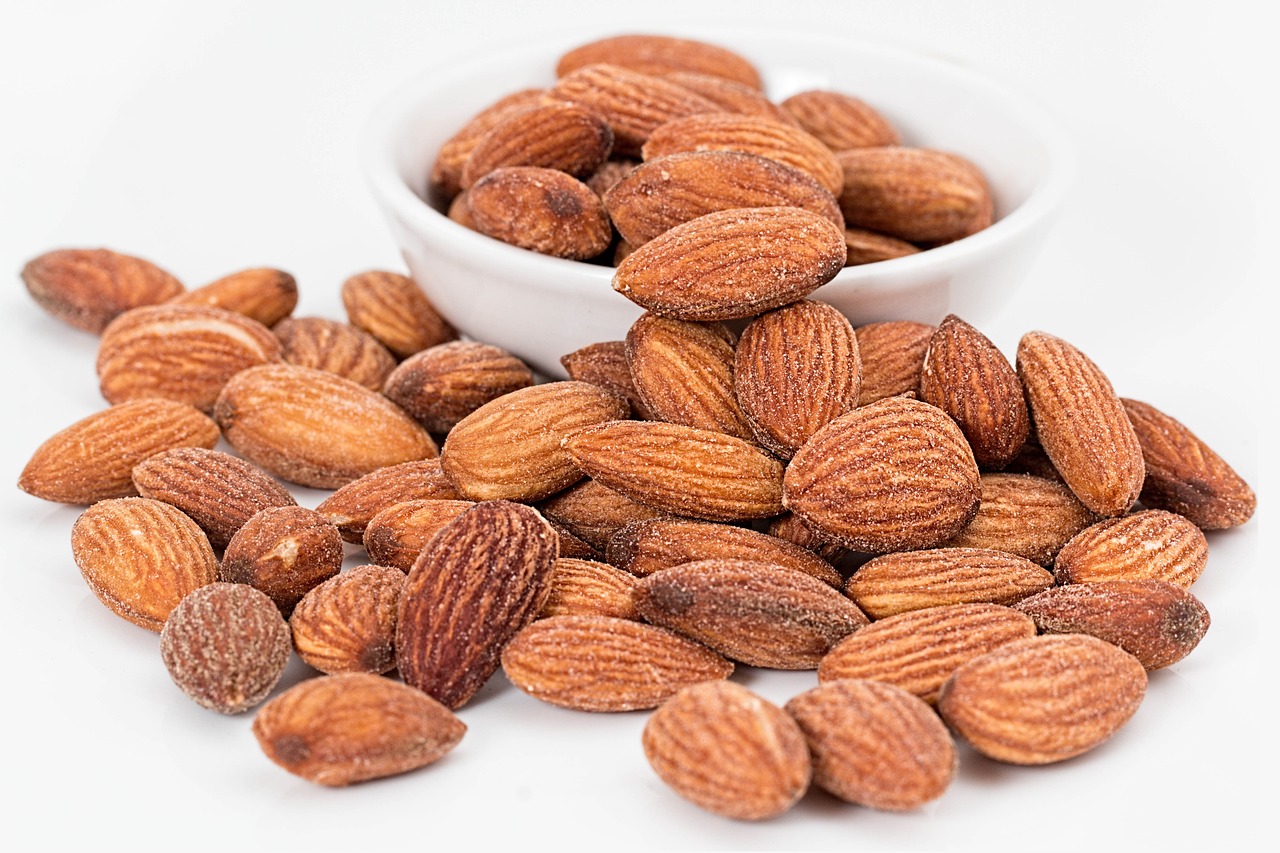
What we put on our plate could be more powerful than some medications - a finding that is becoming increasingly important thanks to current research. Science has made tremendous progress in recent years in unraveling the connection between diet and health at the molecular level. From preventive approaches to therapeutic interventions, studies show how targeted diets can not only increase well-being, but also influence chronic diseases. This area of naturopathy is increasingly coming into focus because it offers an accessible and sustainable way to actively shape your own health.
A central focus of recent studies is on plant-based diets and their influence on cardiovascular diseases. Large-scale studies that have followed thousands of participants over years have shown that a diet rich in fruits, vegetables, whole grains and legumes can significantly reduce the risk of heart attacks and strokes. The high antioxidant and fiber content in these foods reduces oxidative stress and improves vascular health. Such results illustrate how preventative nutritional strategies can play a key role in avoiding lifestyle diseases.
The findings on the effect of nutrition on blood sugar levels and type 2 diabetes are equally impressive. Clinical trials in recent years have shown that a diet with a low glycemic index - i.e. foods that only cause blood sugar to rise slowly - can improve insulin sensitivity. In a study of over 1,000 subjects, switching to complex carbohydrates and healthy fats led to a measurable reduction in HbA1c, an important marker for long-term blood sugar control. These data highlight how nutritional therapy can act as a complementary intervention in metabolic diseases, often with the aim of reducing medication requirements.
Another field of research is dedicated to the connection between nutrition and intestinal health, particularly the role of the microbiome. The latest analyzes show that a diet rich in fiber promotes the growth of beneficial intestinal bacteria, which in turn produce anti-inflammatory substances. In a study of patients suffering from irritable bowel syndrome, changing the diet to include fermented foods and prebiotics resulted in significant relief from symptoms such as bloating and abdominal pain. These results suggest that targeted nutritional measures can be used not only preventively, but also therapeutically for gastrointestinal complaints.
In addition to specific clinical pictures, the preventative power of nutrition also comes into focus. Nutritional advice, which is aimed at healthy people, aims to avoid malnutrition and promote a healthy body weight - especially in sensitive phases of life such as childhood, pregnancy or old age. Studies show that early interventions, such as individual counseling or prevention courses, can reduce the risk of nutrition-related diseases in the long term. Such approaches, which are often accompanied by qualified specialists such as dietitians or nutritionists, are becoming increasingly important (see Gesundheitinformation.de: Nutritional advice ).
A notable trend in research is personalized nutrition, which is based on individual genetic and metabolic profiles. Recent research shows that people react differently to certain foods depending on their genetic makeup. A study of over 800 participants found that personalized diet plans based on genetic testing achieved better results in weight loss and blood sugar control than standardized diets. This development could shape the future of nutritional therapy by offering tailored solutions to individual needs.
Technological advances further support this approach. Telemedical nutritional therapies, which are carried out via video or telephone, enable flexible and location-independent advice. Studies show that such digital interventions can achieve comparable success to face-to-face treatments, provided that technical and data protection requirements are met. These innovations expand access to qualified advice, particularly for people in rural areas or with reduced mobility, and could significantly increase the reach of preventive and therapeutic measures.
Research on nutrition and health shows how profoundly our daily eating habits affect the body. From prevention to therapy to personalized adaptation, the findings offer numerous approaches to promote health in a natural way. These developments invite us to consider nutrition not just as food intake, but as a central pillar of well-being, with potential for further exciting discoveries.
Aromatherapy
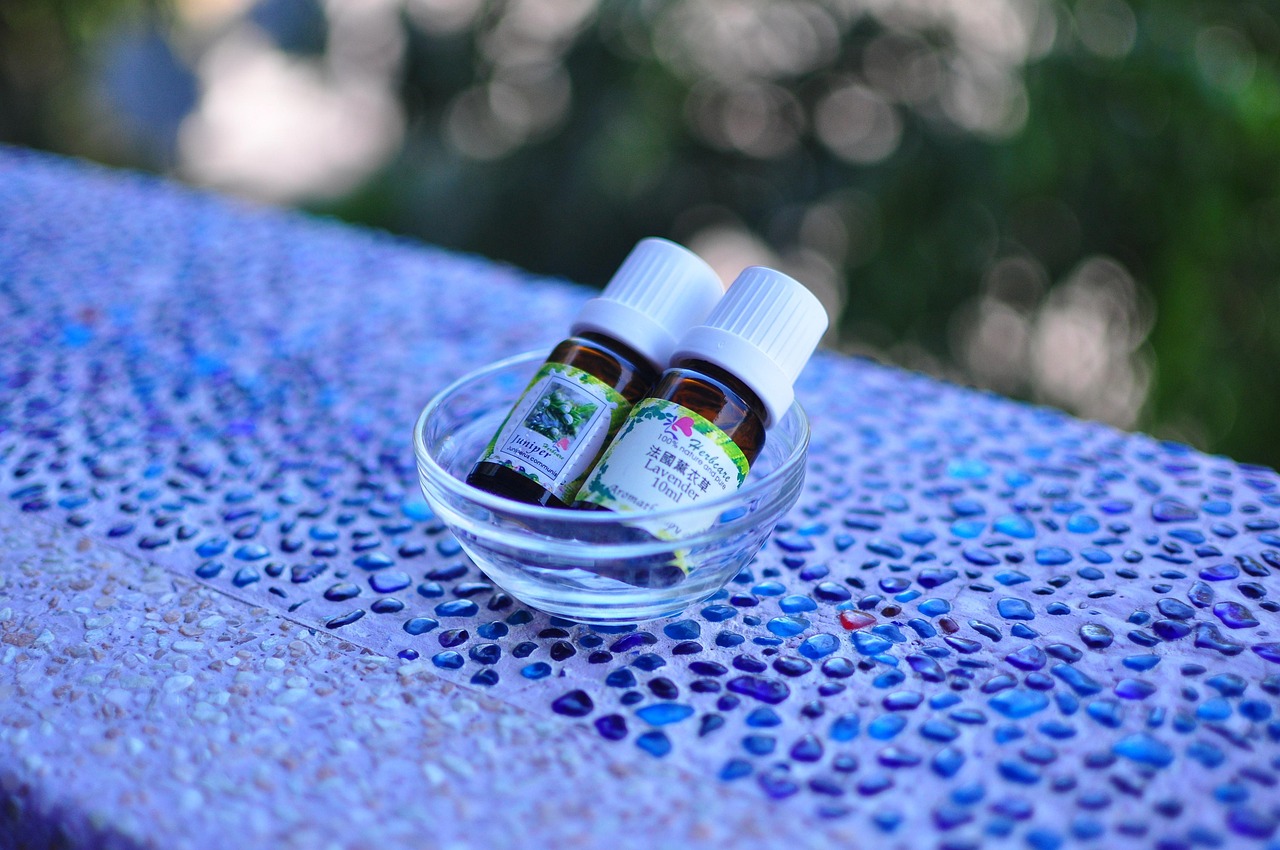
A single drop can captivate the senses and calm the body - essential oils, these concentrated essences of nature, are experiencing a renaissance in modern research. Obtained from flowers, leaves or roots through processes such as steam distillation or cold pressing, they consist of complex mixtures of organic compounds such as terpenes and aromatic molecules. Their therapeutic potential, which has been valued in folk medicine for centuries, is now the focus of scientific research. New studies reveal fascinating insights into their effects and uses, from relieving physical ailments to supporting mental health.
A promising field of research is dedicated to the antimicrobial properties of these essences. In vitro experiments have shown that many essential oils, particularly those high in phenolic compounds such as thyme or oregano oil, are effective against a variety of bacterial strains. An investigation led by Prof. Dr. Reinhard Saller at the University Hospital of Zurich found that even a concentration of 0.25 percent tea tree oil can effectively kill bacteria. Such results suggest that these natural substances could serve as adjunctive agents in infection control, especially in times of increasing antibiotic resistance.
The findings on the effect on the nervous system are equally impressive. Lavender oil, long known for its calming properties, was discovered in studies by Prof. Dr. Gerhard Buchbauer at the University of Vienna extensively investigated. The results show that the scent of lavender increases the activity of the parasympathetic nervous system, thereby reducing stress and anxiety. In clinical trials with patients suffering from sleep disorders, inhalation of this oil led to a measurable improvement in sleep quality. These data illustrate how essential oils can influence emotional well-being via olfactory stimuli.
Another focus of research is on the pain-relieving effect. Peppermint oil has been shown in studies to be remarkably effective for tension headaches. Prof. Dr. Hartmut Göbel from the University of Kiel found that external use of this oil can achieve similar results to paracetamol by influencing pain receptors through its cooling effect. In a study of over 100 participants, most reported rapid relief after applying the oil to the forehead and temples, making it a potential alternative for people who want to avoid pharmaceutical remedies.
In addition to these uses, there is also promising evidence of antiviral and anti-inflammatory effects. Prof. Dr. Jürgen Reichling from the University of Heidelberg was able to prove that essential oils from the myrtle family have antiviral properties that could be helpful in treating colds. Likewise, Prof. Dr. Uwe R. Juergens from the University of Bonn found that eucalyptol - a main component of eucalyptus oil - can reduce the need for cortisone preparations in asthmatics by dampening inflammatory processes in the airways. Such findings open up new perspectives for the supportive therapy of chronic diseases.
Despite these positive developments, researchers urge caution when using it. Essential oils are highly concentrated and, if used improperly, can cause skin irritation, allergic reactions or even toxic effects, especially in children. They can also form harmful byproducts through oxidation, and pesticide residues often accumulate in these fat-soluble substances. These risks underline the need for sound application and high-quality products, as is also emphasized in current scientific discussions (see Aroma practice: studies ).
Research faces further challenges, particularly in standardizing and funding clinical trials. Since essential oils consist of numerous molecules whose composition varies depending on their origin and extraction method, uniform testing conditions are difficult to create. In addition, the characteristic scents make it difficult to conduct double-blind studies, as participants often recognize whether they are receiving an active oil or a placebo. Nevertheless, the number of high-quality studies that further shed light on the therapeutic potential of these natural essences is growing.
The latest findings on essential oils illustrate how versatile nature can be as a source of healing. From fighting microbes to relieving pain and promoting mental balance, they offer numerous approaches that could find application in both self-help and clinical contexts. These developments invite us to further explore the power of scents and deepen their role in modern natural medicine.
Plant-based medicine

Imagine a pharmacy that consists not of pills and syrups, but of nature's treasures - herbal medicines are becoming increasingly important again in modern medicine. These so-called phytopharmaceuticals, complex mixtures of natural ingredients, are obtained from medicinal plants and offer a gentle but often effective alternative or supplement to synthetic medications. Current trends and research shed light on how effective these agents can be for a variety of conditions, while also providing new avenues for drug development. Science is faced with the challenge of combining traditional knowledge with modern standards.
A notable focus is on treating everyday ailments such as colds, stomach problems or bladder infections, for which herbal preparations are often used. Studies show that extracts from plants such as echinacea or cranberry have measurable results in supporting the immune system or relieving urinary tract infections. A comprehensive analysis found that echinacea supplements can shorten the duration of colds by an average of one day when taken early. Such results make it clear that these agents represent a valuable option for minor illnesses, especially for self-treatment.
Research extends beyond everyday problems to more serious illnesses. St. John's wort has been shown in numerous clinical trials to be effective for mild to moderate depression, with effects comparable in some cases to traditional antidepressants, but often with fewer side effects. Ginkgo biloba is also being investigated in the early stages of dementia, with studies documenting slight improvements in cognitive functions when taken regularly. These findings underscore that herbal remedies can be relevant not only for trivial ailments, but also for complex health challenges.
An emerging trend is so-called “molecular pharming” technology, in which plants are genetically modified to produce therapeutic proteins. This method promises to be a cost-effective and safe alternative to traditional production systems such as mammalian cell cultures. One example is the work of Protalix in Israel, which produces taliglucerase alfa – a drug for Gaucher syndrome – from plant cells. Such innovations show how plants can serve not only as a source of traditional remedies, but also as a platform for cutting-edge medicines (see Plantresearch.de: Biopharming ).
However, the effectiveness of herbal medicines depends heavily on factors such as the extraction process and the quality of the raw materials. While synthetic medications often consist of a few, clearly defined active ingredients, phytopharmaceuticals contain a variety of components that can have a synergistic effect. This makes standardization and proof of effectiveness more complex. In Germany and the EU there are two approval categories: “herbal medicines”, for which strict effectiveness studies are required, and “traditional herbal medicines”, for which a long history of use is sufficient as evidence. The majority of preparations fall into the second category, which underlines the need for sound advice from pharmacists or doctors.
Despite their often good tolerability, herbal remedies are not free from risks. Side effects and interactions with other medications can occur, especially with long-term use or in combination with synthetic medications. For example, St. John's wort can influence the effects of certain contraceptives or antidepressants. Such aspects make it clear how important expert support is to ensure the safety and effectiveness of the application. Research is working to better understand such interactions and develop clear guidelines.
Another aspect that is becoming increasingly important is sustainability in the production of herbal medicines. The cultivation of medicinal plants and the extraction of their active ingredients face the challenge of meeting ecological standards and at the same time meeting demand. Initiatives such as controlled cultivation or the use of transgenic plants in greenhouses aim to ensure both quality and environmental compatibility. These developments reflect the shift towards medicine that not only heals, but is also in harmony with nature.
The trends and research results on herbal medicines show how dynamically this area of naturopathy is developing. From proven remedies for everyday ailments to innovative approaches in biotechnology, they offer a wide range of ways to support health naturally. These advances invite us to further explore the potential of the plant world and refine its application in modern medicine.
Traditional healing methods in a modern context

Deeply rooted in human history, ancient healing practices find their way into the sterile world of modern hospitals and practices. From the millennia-old teachings of traditional Chinese medicine to the holistic approaches of Ayurveda - traditional methods are increasingly recognized as a valuable complement to conventional medicine. This integration, often referred to as integrative medicine, combines the best of both worlds to provide patients with more comprehensive care. The analysis of current developments shows how profoundly this change is shaping the healthcare system and what challenges need to be overcome.
A central area of this fusion is Traditional Chinese Medicine (TCM), whose methods such as acupuncture and herbal medicine are becoming increasingly recognized in Western clinics. Clinical studies show that acupuncture can achieve significant results in the treatment of chronic pain or migraines, which has led to its inclusion in treatment plans in many countries. Hospitals in Europe and North America are increasingly offering acupuncture sessions as a complementary therapy, often in combination with conventional painkillers to minimize side effects. This development shows how ancient practices based on the balance of Qi and Yin-Yang can be combined with modern evidence-based practices.
Ayurveda, the Indian “knowledge of life”, is also gaining importance in Western medicine. With his focus on balancing the doshas (Vata, Pitta, Kapha), he offers approaches such as herbal therapy, nutrition and yoga, which are increasingly being used in wellness programs and rehabilitation centers. Studies on the effects of Ayurvedic preparations, such as ashwagandha, in reducing stress have shown positive results, prompting clinics to incorporate such methods into the treatment of anxiety or sleep disorders. This integration is supported by the growing demand for holistic approaches that take both body and mind into account.
In addition to these great traditions, classic natural healing methods such as hydrotherapy or thermotherapy also find their place in modern treatment concepts. Water applications, heat and cold treatments are used in rehabilitation clinics to relieve pain and reduce inflammation, often as a cost-effective supplement to drug therapies with few side effects. Such methods, aimed at promoting self-healing powers, are increasingly recommended by doctors, especially for chronic diseases such as rheumatism, where exercise therapy and herbal remedies such as devil's claw are combined (see Health Journal: Naturopathy ).
However, integrating traditional practices also brings challenges. One of the biggest hurdles is the standardization and scientific validation of these methods. While conventional medicine is based on rigorous clinical trials, many traditional approaches rely on centuries of experience that do not always meet modern standards of evidence. Initiatives to conduct randomized controlled trials, for example on the effectiveness of TCM or Ayurveda, are underway, but the complexity of holistic systems often makes clear assessment difficult. There are also cultural differences in the perception of health and illness that can hinder seamless integration.
Another aspect is the training and qualifications of specialists. In order to safely and effectively integrate traditional healing practices into modern medicine, doctors and therapists need in-depth knowledge of both conventional and alternative approaches. In some countries, specialized training, such as in integrative medicine, is offered to close this gap. At the same time, the demand is growing for interdisciplinary teams in which conventional doctors work with naturopaths to create personalized treatment plans that combine, for example, acupuncture with physiotherapy or Ayurvedic nutrition with drug therapy.
Financing and acceptance by health systems also represent a hurdle. While some traditional methods, such as acupuncture for certain indications, are covered by health insurance companies in countries such as Germany, reimbursement for many other practices remains limited. This limits patient access and slows broader integration. Nevertheless, the growing number of integrative clinics and programs shows that demand for such approaches is increasing, which could stimulate policy and institutional changes toward more inclusive health care.
The fusion of traditional healing practices with modern medicine opens up new horizons for patient care. However, it also calls for a rethink in the way health is defined and treated, towards a model that emphasizes holism and individuality. This change, driven by scientific curiosity and cultural respect, could create the basis for a medicine of the future that harmoniously combines ancient knowledge and modern technologies.
Naturopathy and mental health

A gentle touch of lavender or a quiet meditation - sometimes it's the simplest things that bring comfort to the soul. In a world in which psychological stress such as stress, anxiety and depression increasingly impair the quality of life, naturopathic approaches are becoming increasingly important as gentle support for mental health. Current studies shed light on how naturopathic methods – from herbal remedies to exercise practices and mindfulness techniques – can achieve positive effects on mental well-being. This research opens doors to alternative ways to promote emotional balance and alleviate psychological distress.
A promising field is the effect of herbal preparations on psychological complaints. St. John's wort, long used in traditional medicine, has demonstrated its effectiveness in mild to moderate depression in numerous clinical studies. Studies show that the active ingredient hypericin inhibits the reuptake of serotonin in the brain, which can improve mood. A meta-analysis with over 1,500 participants documented that taking them over several weeks achieved similar results to conventional antidepressants, but often with fewer side effects. Such findings highlight how natural remedies can be a valuable option for people seeking gentle alternatives.
Likewise, adaptogenic plants such as ashwagandha and rhodiola are gaining attention in research on stress management. These substances, rooted in Ayurvedic and traditional medicine, appear to modulate the hypothalamic-pituitary-adrenal axis, thereby regulating cortisol release. In a randomized, placebo-controlled study of stressed adults, taking ashwagandha for eight weeks led to a significant reduction in stress levels and an improvement in overall well-being. These results suggest that such natural remedies can help strengthen resilience to psychological stress.
In addition to herbal approaches, movement and mindfulness techniques play a central role in promoting mental health. Yoga and Tai Chi, which bring body and mind into harmony, have been analyzed in recent studies for their effects on anxiety and depression. A meta-analysis with over 1,000 participants showed that regular yoga practice can significantly reduce symptoms of anxiety disorders by activating the parasympathetic nervous system and reducing stress hormones. Such practices, often drawn from traditional healing systems, offer an accessible way to support mental wellness without relying on medication.
Another promising area is aromatherapy, which uses essential oils to influence emotional states. Studies on the effects of lavender oil have shown that its scent calms the activity of the central nervous system and can reduce anxiety. In a clinical study with patients suffering from sleep disorders, inhaling lavender before bed led to a measurable improvement in sleep duration and quality. These results illustrate how olfactory stimuli can provide a direct link to emotional well-being, which is particularly helpful for stress-related complaints.
The role of mindfulness and meditation practices is also increasingly being investigated scientifically. Mindfulness-Based Stress Reduction (MBSR), a method based on Buddhist principles, has proven its effectiveness in reducing stress and depressive symptoms in numerous studies. A study of over 500 participants showed that an eight-week MBSR program not only reduced subjective stress levels, but also produced measurable changes in brain regions associated with emotion regulation. Such approaches, which promote personal responsibility and self-awareness, fit well with the naturopathic goal of stimulating the self-healing powers (see Wikipedia: Mental health ).
Despite these positive developments, there are challenges in research. The effect of naturopathic approaches on mental health is often difficult to standardize because individual factors such as personal previous experiences or cultural backgrounds play a role. In addition, many studies are limited to smaller samples or struggle with methodological limitations such as the difficulty of establishing true placebo controls. Nevertheless, the evidence base is growing and the demand for such methods is increasing, especially at a time when psychological stress is increasing due to social and professional demands.
Current findings on naturopathic approaches to mental health offer promising perspectives for gentle, holistic support. They invite you to look beyond traditional drug therapies and explore methods that appeal to body and soul equally. These developments could pave the way for wider acceptance and integration of such practices in the treatment of mental challenges.
Patient experiences and case studies

Behind every healing story there is a personal journey, often characterized by hope, doubt and the search for relief. Naturopathic treatments, ranging from herbal medicine to holistic therapies, have made a difference for many people when conventional approaches have reached their limits. The individual reports of such experiences not only provide inspiration, but also valuable insights into the practical application and results of these methods. They paint a vivid picture of how naturopathy can change the lives of individuals and illustrate the variety of paths to recovery.
A woman we'll call Anna talks about her journey with chronic sleep disorders that plagued her for years. After prescription medications provided only short-term relief and unpleasant side effects, she turned to aromatherapy. By using lavender oil daily before going to bed and accompanying relaxation exercises, she noticed a significant improvement in her sleep quality after a few weeks. Anna describes how the calming scent helped her clear her head and fall asleep more easily - a small but life-changing step that showed her how powerful natural remedies can be.
Another experience report comes from a man we will call Markus here, who struggled with recurring anxiety attacks. Instead of relying solely on drug therapies, he opted for a combination of yoga and herbal supplements like ashwagandha. Markus reports that regular practice of breathing exercises and gentle movements helped him manage acute moments of tension, while the herbal remedy reduced his overall stress levels. After a few months, he felt more stable and able to cope better with stressful situations, giving him a new sense of control over his mental health.
There are also impressive stories in the area of physical complaints. A mother we'll call Lisa was looking for alternatives for her child, who was diagnosed with ADHD and was having difficulty concentrating in school. In addition to an adapted diet that reduced sugar and processed foods, she incorporated elements of exercise therapy such as regular walks in nature. Lisa noticed that her child became calmer and more focused, especially after outdoor activities that seemed to have a calming effect. Such personal experiences reflect the diversity of approaches that can help families overcome challenges (see Diseaseexperiences.de: AD(H)S ).
Another touching story comes from a woman we'll call Sabine, who struggled with the emotional and physical consequences of treatment after a breast cancer diagnosis. In addition to conventional therapy, she turned to naturopathy, particularly phytotherapy with mistletoe preparations and the practice of mindfulness meditation. Sabine describes how these approaches helped her better tolerate the side effects of chemotherapy and develop a sense of inner strength. The meditation gave her space to process fears, while she found the herbal remedies to support her immune system. Her story shows how naturopathy can act as a complementary force in difficult phases of life.
However, not all experiences are exclusively positive. A man we'll call Thomas reports mixed results when treating his chronic back pain with acupuncture. While the first sessions brought noticeable relief, the effect wore off after a few weeks and he had to combine the therapy with other methods such as physiotherapy. Still, Thomas emphasizes that acupuncture helped him manage the pain for a while without resorting to strong painkillers. His story illustrates that naturopathic approaches do not always offer a complete solution, but can still make an important contribution.
These individual reports reflect the wide range of experiences people have with naturopathic treatments. They show that success often depends on personal circumstances, the type of symptoms and the combination with other therapies. At the same time, they underline the importance of personal responsibility and the willingness to try out different approaches in order to find the right path to improvement. Such stories complement scientific research and provide a human perspective on the possibilities that naturopathy holds.
Future of naturopathy

The world of naturopathy is on the threshold of an exciting future in which ancient knowledge and cutting-edge science are merging ever more closely. With growing interest from patients, physicians and researchers worldwide, this area is increasingly becoming the focus of academic and clinical investigations. The outlook for future trends and developments shows that naturopathy is not only seen as a supplement, but increasingly as an integral part of health care. From innovative technologies to a stronger evidence base, the coming years promise to fundamentally change the landscape of alternative medicine.
A promising trend is the increased focus on evidence-based research to demonstrate the effectiveness and safety of naturopathic procedures. Institutions such as the Naturopathy and Integrative Medicine working group at the Charité Universitätsmedizin Berlin under the leadership of Prof. Dr. Benno Brinkhaus is working on validating the effectiveness of methods such as acupuncture, osteopathy and mind-body medicine through clinical and epidemiological studies. Such efforts aim to incorporate positively evaluated approaches into integrative medicine and thus improve patient care. This development could lead to natural healing methods being more closely integrated into conventional treatment concepts (see Charité: Naturopathy ).
At the same time, the personalization of therapies is becoming increasingly important. Advances in genetics and metabolomics make it possible to tailor naturopathic treatments to individual needs. Future research could aim to use genetic profiles to optimize the effectiveness of herbal medicines or nutritional approaches for each patient. Such tailor-made concepts, which are already showing initial success in nutritional medicine, could significantly increase the precision and acceptance of natural healing methods. This would not only improve therapy results, but also promote patient responsibility.
Another exciting field is the technological support of naturopathic approaches. Telemedicine and digital platforms already offer access to consultations and therapies, regardless of geographical boundaries. In the coming years, apps and wearables that collect real-time health data could provide personalized recommendations for naturopathic interventions such as exercise therapy or stress management. This development could expand the reach of naturopathy, especially for people in remote regions, and make it easier to integrate into everyday life.
The increasing professionalization and regulation of the area is also the focus of future developments. The seriousness of naturopaths should be strengthened with stricter quality standards and the introduction of uniform training guidelines, such as those already sought in Germany by specialized universities and further training institutes. At the same time, the regulation of herbal medicines is being pushed forward, for example through EU directives, to ensure safety and effectiveness. Such measures could increase acceptance among patients and the healthcare system and make it easier to distinguish between evidence-based and non-evidence-based practices.
Another promising approach is interdisciplinary collaboration between conventional and alternative medicine. Future research projects could increasingly aim to create synergies, for example by combining acupuncture with conventional medical pain therapies or integrating mind-body medicine into the treatment of mental illnesses. This collaboration, which is already being promoted at institutions such as the Charité, could not only improve patient care, but also facilitate reimbursement by health insurance companies for alternative therapies, which would open access to broader segments of the population.
Ultimately, sustainability is becoming increasingly important in natural medicine. Future developments could focus on establishing environmentally friendly production methods for herbal medicines and minimizing the ecological footprint of therapies. A focus on regional medicinal plants and sustainable farming methods could not only protect the environment, but also emphasize the connection between personal and planetary health - a principle that is deeply rooted in naturopathy.
The horizon of naturopathy is full of possibilities waiting to be explored and exploited. With a greater focus on scientific evidence, technological innovation and interdisciplinary collaboration, this area could play a central role in healthcare in the coming years. These developments invite us to further explore the potential of nature and to put it at the service of holistic, patient-oriented medicine.
Sources
- https://naturalhealthkingdom.com/natural-health-trends-2025/
- https://natur.wiki/posts/gesundheit-ernaehrung/die-zukunft-der-naturheilkunde-trends-und-entwicklungen-in-der-alternativen-medizin
- https://en.wikipedia.org/wiki/Mechanism_(biology)
- https://www.spektrum.de/lexikon/biologie/mechanismus/41567
- https://www.scribbr.de/aufbau-und-gliederung/forschungsergebnisse-bachelorarbeit/
- https://www.bachelorprint.de/aufbau-gliederung/forschungsergebnisse/
- https://www.mayoclinic.org/tests-procedures/acupuncture/about/pac-20392763
- https://en.wikipedia.org/wiki/Acupuncture
- https://www.ikim.unibe.ch/forschung/uebersichten_zum_stand_der_forschung/homoeopathie/index_ger.html
- https://homoeopathiehilft.at/wissenschaft/prof-dr-stephan-baumgartner-neueste-erkenntnisse-aus-der-homoeopathie-forschung/
- https://www.gesundheitsinformation.de/ernaehrungsberatung-und-ernaehrungstherapie.html
- https://www.aok.de/pk/leistungen/therapien/ernaehrungstherapie/
- https://de.m.wikipedia.org/wiki/%C3%84therische_%C3%96le
- https://aromapraxis.de/aroma-schule/aetherische-oele/wissenschaft/wissenschaftliche-studien/
- https://www.apotheken-umschau.de/medikamente/heilpflanzen/pflanzenmedizin-wie-wirksam-ist-sie-818853.html
- https://www.pflanzenforschung.de/de/pflanzenwissen/journal/biopharming-pflanzenbasierte-arzneimittelproduktion-972
- https://www.gesundheitsjournal.de/3314/was-sind-naturheilverfahren
- https://gesund-und-erholt.de/heilkunst-weltweit-ein-ueberblick-ueber-verschiedene-traditionelle-heilsysteme/
- https://de.m.wikipedia.org/wiki/Naturheilkunde
- https://de.wikipedia.org/wiki/Psychische_Gesundheit
- https://www.krankheitserfahrungen.de/module/adhs
- https://www.krankheitserfahrungen.de/module/brustkrebs
- https://epidemiologie.charite.de/forschung/projektbereich_komplementaere_und_integrative_medizin/arbeitsgruppe_naturheilkunde_und_integrative_medizin/

 Suche
Suche
 Mein Konto
Mein Konto
